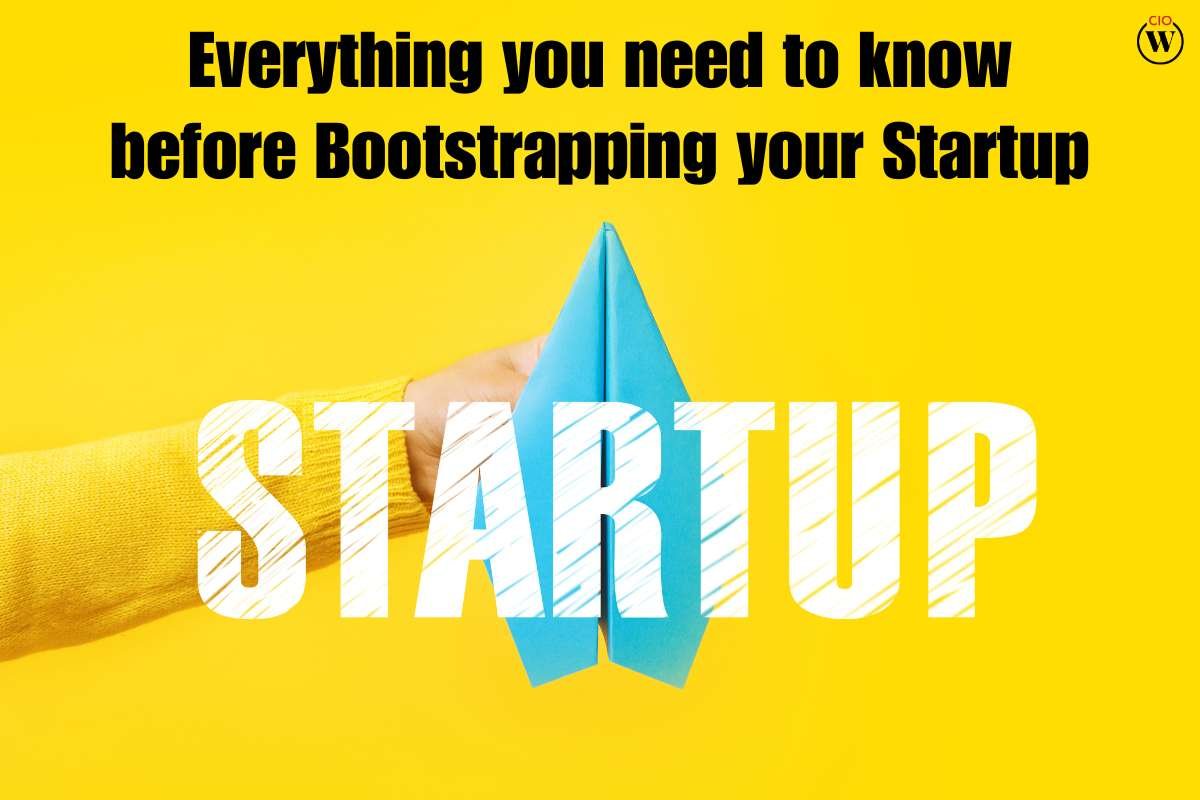Starting a new business and running it successfully is not everyone’s cup of tea. And if the business is self-funded i.e. bootstrapped, it becomes even more difficult. But if you look at successful startups, you will find that many of them started with bootstrapping. So, if you are also thinking about bootstrapping your startup, this article is for you.
In this article, we have covered the basic concept of bootstrapping your startup, as well as the pros, cons, and guide to bootstrapping a business. Do read it till the end!
The Concept of Bootstrapping Your Startup
Bootstrapping is a statistical and computational technique utilized in many disciplines, such as computer science, finance, and statistics. It entails repeatedly resampling the available data with replacement in order to estimate the features of a statistical model or estimator. Without making any firm assumptions about the underlying population distribution, the main objective of bootstrapping is to evaluate a statistic’s level of uncertainty or to obtain a confidence interval.

When the presumptions necessary for conventional statistical procedures, such as parametric tests, cannot be met, bootstrapping is especially helpful. It doesn’t rely on particular population distributions or the presumption of normality. Furthermore, for complicated models or limited sample numbers, it can offer more precise calculations and judgments.
Advantages of Bootstrapping Your Startup
Here’s how bootstrapping your startup can help you grow further.
1. Full Control and Autonomy
By bootstrapping your firm, you maintain total control over the course of your company’s operations and the processes used to make decisions. You can pursue your goal without compromising your values because you don’t have to answer to other investors. In terms of business culture, product development, and strategic decisions, this independence is very valuable.
2. Focus on Revenue development
When you bootstrap, you are compelled to focus on revenue development right away. Contrary to venture-backed businesses, which may place more emphasis on rapid profits than on user acquisition and market dominance, bootstrapped business owners must make sure their products or services are profitable from the outset in order to remain in operation. This focus on developing a sustainable business model may, over time, improve financial management and profitability.
3. Lean operations
Bootstrapped businesses frequently follow lean concepts, which can result in effective resource management and decreased waste. By teaching you to get more done with less, this strategy promotes a culture of resourcefulness and inventiveness. When every dollar counts, you get good at finding economical solutions and figuring out where to put your money to have the biggest impact.
4. No Debt or Equity Obligations

Bootstrapped firms are exempt from debt repayment obligations and equity forfeiture requirements, in contrast to companies that obtain capital through debt or equity. Greater mental tranquility and reduced danger of financial loss can result from this financial freedom. In addition, you may concentrate on providing excellent customer service and creating long-term value without having to please outside investors.
Challenges involved in Bootstrapping your Startup
After advantages, let us now go through the challenges involved in bootstrapping your startup.
- Limited Initial Capital
Because bootstrapping often begins with little money, it may be difficult to grow the company fast or to compete with well-funded rivals. While bootstrapping can be a great approach to establishing a lean startup, it might not be the best option for businesses that need to make significant upfront investments in infrastructure, R&D, or marketing.
- Slow development Trajectory
Compared to firms supported by outside capital, bootstrapped startups’ development trajectories can be slower because they rely on profitability and organic growth for expansion. Gaining market share and achieving important milestones could take longer without a sizable infusion of cash. For business owners hoping for quick success, this slower growth might be discouraging.
- Resource Constraints
A lack of money might prevent recruiting, marketing, and other crucial business development activities, increasing the founder(s)’ stress levels. In the early phases, founders may have to wear several hats and handle a variety of tasks, which can be stressful and may cause burnout if not well handled.
- Missed Opportunities
Due to financial restrictions, bootstrapping may cause you to forego opportunities that could be highly rewarding. If you don’t have the resources to complete huge orders or expansion prospects, for instance, you could have to decline them. Any firm must make wise decisions, yet being overly cautious might impede expansion and market penetration.
How to successfully Bootstrap your Startup?
- Launch Lean
Start with a minimally viable product (MVP) that solves a particular market issue. Spending too much on unnecessary features or costly marketing initiatives ought to be avoided. Concentrate on providing early customers with value and gathering feedback to continually enhance your product.
- Focus on Cash Flow

Make managing cash flow your top priority and keep a close check on your finances. Know exactly how much money is coming in and going out at all times. When times are tough, think about introducing cost-cutting measures and when times are good, think about strategically reinvesting gains.
- Leverage the gig economy
In the beginning, take into account using independent contractors or freelancers for some jobs. This makes it possible for you to increase your staff as necessary without having to commit to full-time hires and gives you access to specialized talent.
- Create a Powerful Network
Building a strong network is crucial for any startup, but bootstrapped businesses need it even more. Develop connections with possible clients, business partners, and mentors who may provide direction and assistance. These relationships may result in profitable business opportunities, partnerships, and revelations.
- Embrace Frugality
Adopt a thrifty mindset throughout your organization by embracing it. Search for affordable alternatives, bargain with vendors, and cut back on pointless spending. Find innovative strategies to bootstrap your business without sacrificing quality.
Conclusion
Starting a business from scratch is a risky but worthwhile venture that comes with its own rewards and difficulties. You can effectively navigate the bootstrapped journey by being aware of the benefits and drawbacks and putting effective success methods into practice. As you start your company from scratch, keep in mind that patience, persistence, and adaptability are crucial qualities that will help you succeed. Bootstrapping can be a liberating method to make your startup goals come true if you have a well-thought-out plan and are committed to your idea. Despite the hardship, the sense of ownership and completion make the journey worthwhile.









